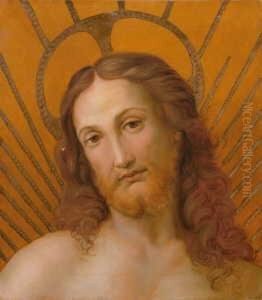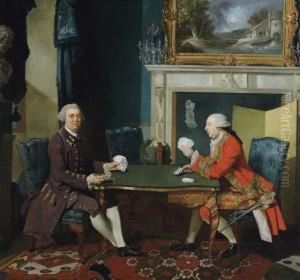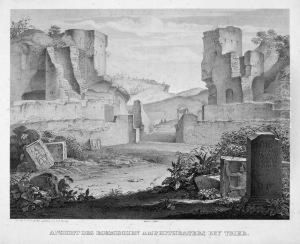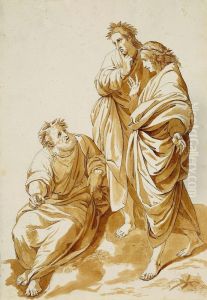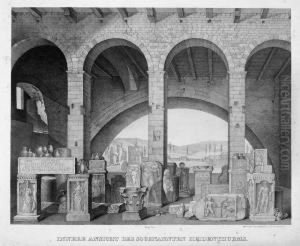Johan Anton Alban Ramboux Paintings
Johan Anton Alban Ramboux was a German painter, draughtsman, and museum curator, born on 5 October 1790 in Trier, then part of the French Empire. Ramboux's artistic journey began under the tutelage of his father, who was a minor painter, from whom he inherited an initial passion for the arts. His formal education in art commenced at the École des Beaux-Arts in Paris, where he was significantly influenced by the works of the Italian Renaissance, an influence that would deeply permeate his entire oeuvre. Known for his meticulous attention to detail and his devotion to historical accuracy in depicting scenes from the past, Ramboux became a prominent figure in the Romantic movement in Germany, although his style also embraced elements of the Nazarene movement, which sought to revive honesty and spirituality in Christian art.
During his career, Ramboux was especially esteemed for his frescoes and watercolor paintings, which often depicted religious and historical themes. His work was characterized by its delicate execution and the emotional depth it conveyed, traits that garnered the admiration of his contemporaries. In 1822, Ramboux embarked on an extensive study trip to Italy, which lasted until 1826. This journey was pivotal, deeply influencing his artistic direction. The sketches and paintings he created during this period, inspired by the Italian landscape, its people, and its monumental history, became some of his most celebrated works.
Beyond his contributions as an artist, Johan Anton Alban Ramboux also made significant contributions to the art world as a curator. In 1832, he was appointed the director of the Wallraf-Richartz Museum in Cologne, a position he held with distinction until his death. During his tenure, Ramboux was instrumental in expanding the museum's collection, notably acquiring works that reflected his interest in medieval and Renaissance art. His efforts in this role helped lay the foundation for the museum's reputation as a premier institution for historical and religious art.
Ramboux's legacy is not only in his paintings but also in his influence on the appreciation and collection of older art genres within German institutions. His dedication to the preservation and study of Renaissance and medieval art helped inspire a renewed interest in these periods, which was a significant contribution to the art historical field in the 19th century. Johan Anton Alban Ramboux passed away on 10 October 1866 in Cologne, leaving behind a legacy that continues to be appreciated for its devotion to historical fidelity and artistic beauty.
